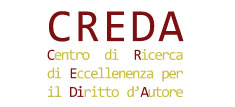L'Autorità Garante della Concorrenza e del Mercato, in data 26 luglio, ha autorizzato con condizioni…
New infographic: models of separation and equivalence of access in Europe

Vertically integrated operators with significant market power (SMP) may have incentives to discriminate in favour of their own retail services. For example, by applying better wholesale prices internally, or by giving their retail services access to more or better information or systems.
National regulatory authorities (NRAs) may impose a non-discrimination obligation to prevent such behaviour. This obligation can be based on equivalence of inputs (EoI) or equivalence of outputs (EoO). To ensure compliance with this obligation, NRAs may consider imposing some form of separation.
Cullen International has published an infographic summarising whether separation is applicable at wholesale level and, if applicable, the model of separation adopted by incumbents in Czech Republic, France, Germany, Iceland, Italy, Spain, Sweden and UK.
The overview covers:
1) Degrees of separation based on the following models:
- Functional separation: physically separated staff, systems and processes
- Legal separation: separate legal entity remaining under the same overall ownership, physically separated staff, systems and processes.
- Structural separation: separate legal entity with different ownership.
2) Whether the model of separation adopted was mandated by the NRA or voluntary implemented by the vertically integrated operator.
3) The equivalence of access model: equivalence of input (EoI) or equivalence of output (EoO).
4) Whether compliance with a stricter form of non-discrimination resulted in a less stringent regulatory treatment elsewhere (e.g. withdrawal of ex ante price control).
or ACCESS THE FULL BENCHMARK (for subscribed clients only)
or REQUEST ACCESS via a free trial!
(By Stefano De Luca via http://www.cullen-international.com)








